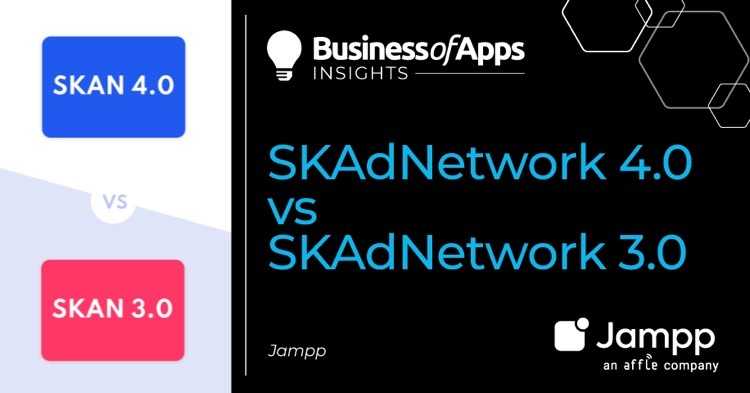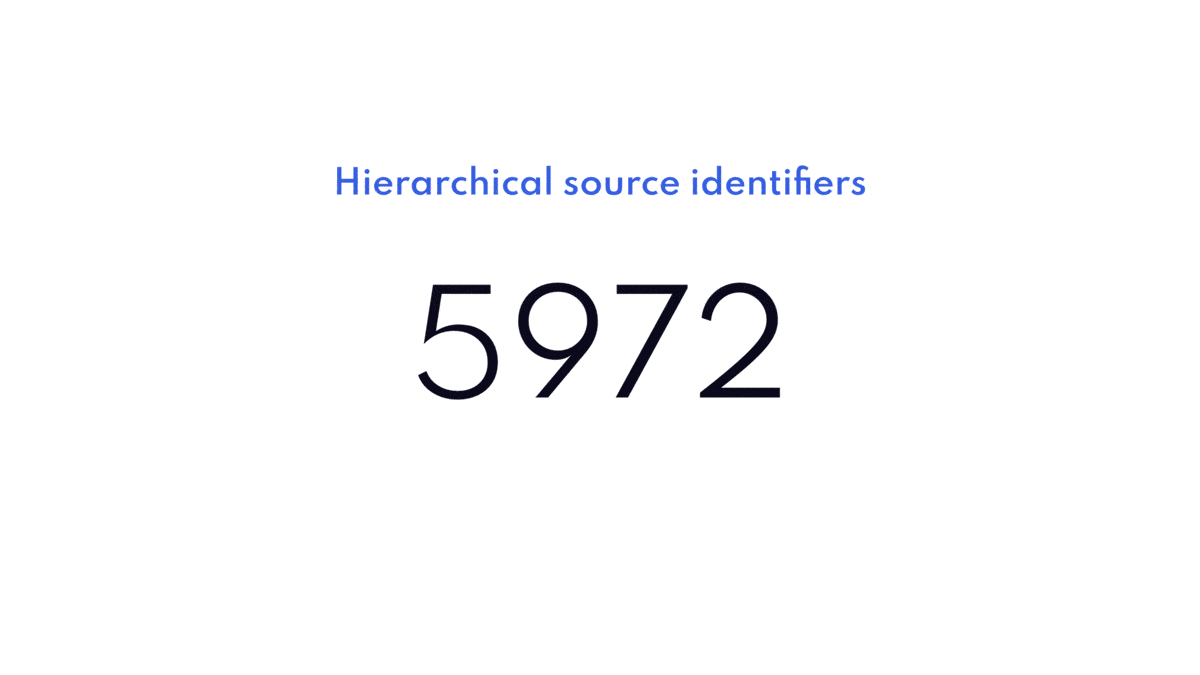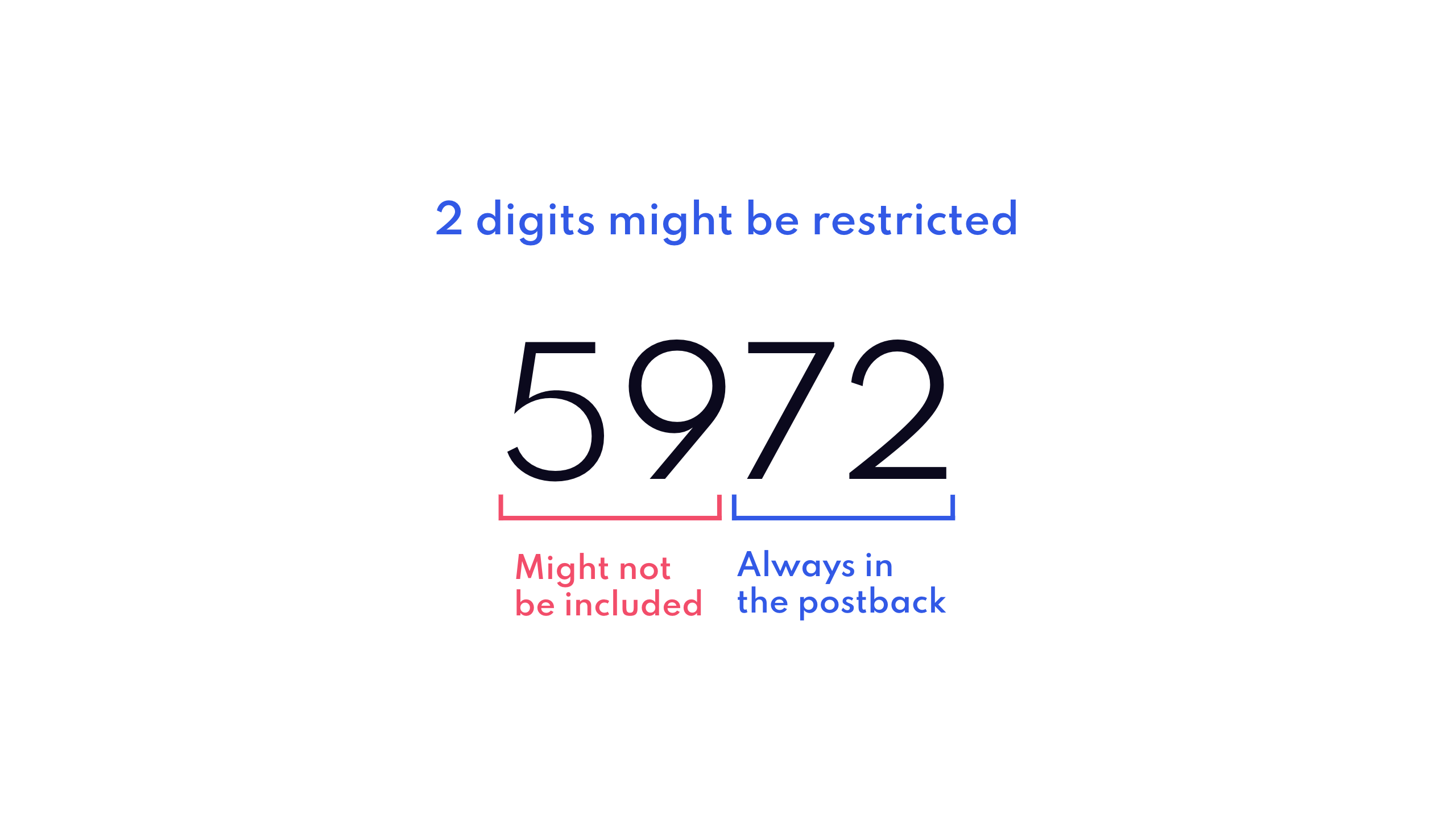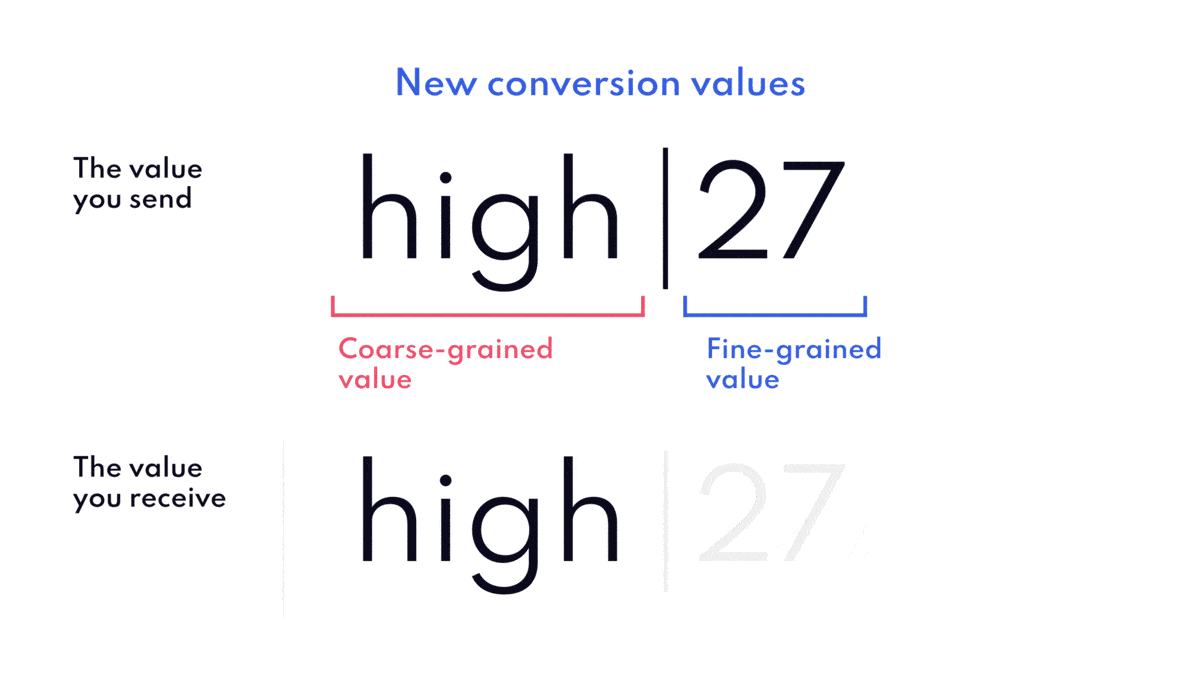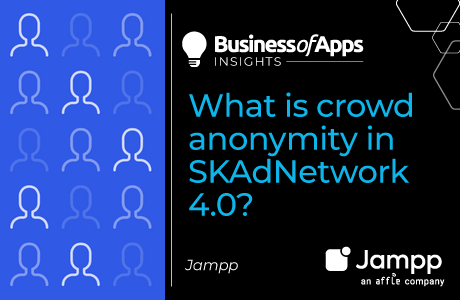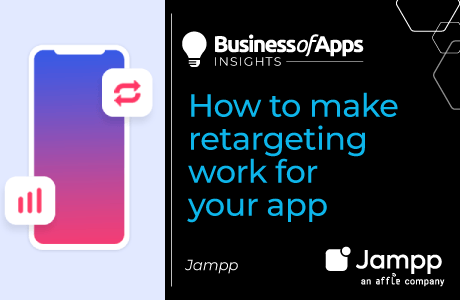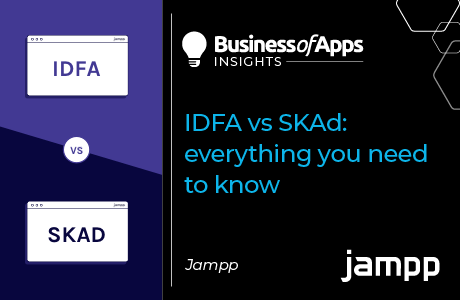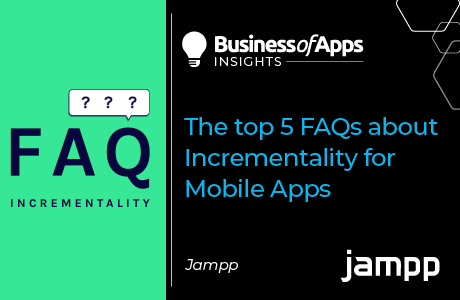In this article, we’ll dive into the latest SKAN updates introduced by Apple and what they mean for app marketers looking to grow their iOS campaigns.
Welcome, SKAdNetwork 4.0 👋
Earlier this month, Apple updated its SKAdNetwork documentation to reflect some of the changes that will be available in the new SKAN version. If you’re anything like us, you know that while the industry has made a lot of progress in figuring out iOS 14.5+, there’s still a lot of room for improvement in the SKAN framework itself.
SKAdNetwork 4.0
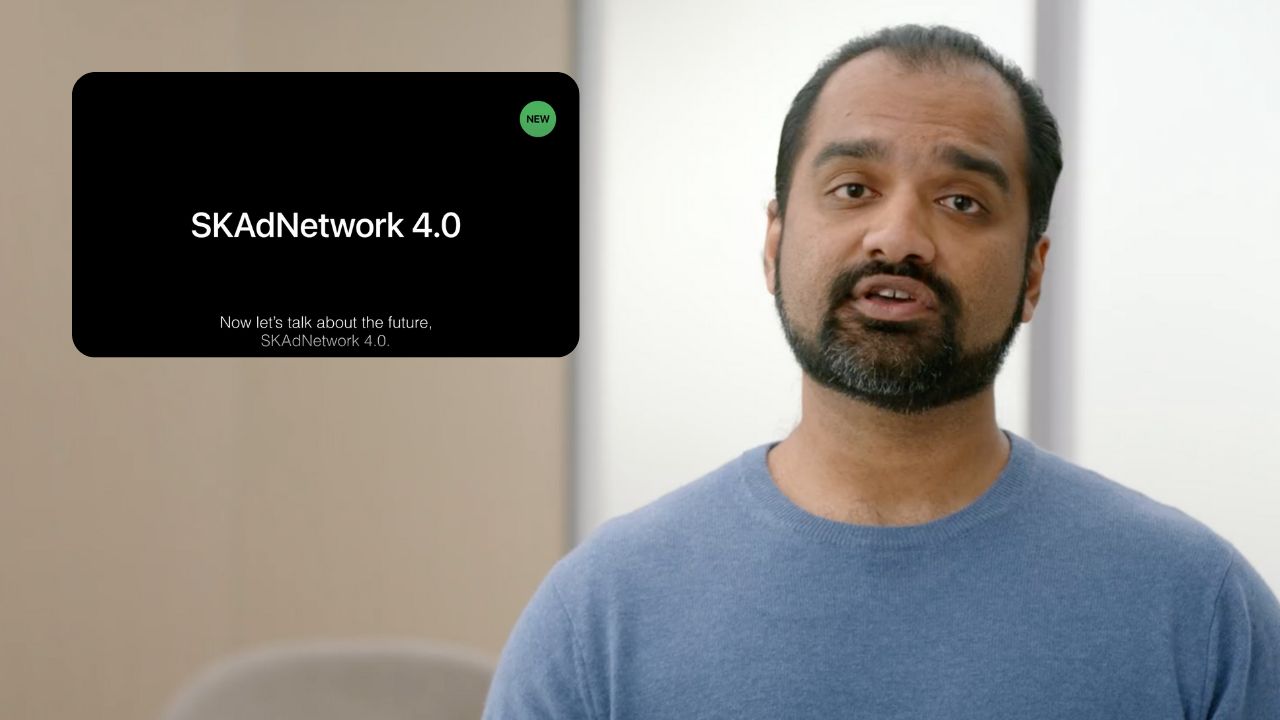
Source: Jampp
So is SKAdNetwork 4.0 the turning point we’d been expecting? The main changes in SKAdNetwork 4.0 include:
- Hierarchical source identifiers
- Hierarchical conversion values
- Multiple conversions
- SKAdNetwork attributions for web
In this article, we’ll dive into each of the updates introduced by Apple and what they actually mean for app marketers looking to grow their iOS campaigns.
This article was first published on jampp.com.
Hierarchical source identifiers
🆚 What changes?
- The campaign ID field is now called source identifier: the new name better suits the purpose of this field—letting advertisers identify which campaign an app install was attributed to, or any other additional attribution information.
- The range of the source identifier is increased from 2 to 4 digits: the easiest way to understand this is to consider this field as a single number composed of combinations of 2, 3, and 4 digit numbers.
Hierarchical source identifiers
Source: Jampp
➡️ What does this mean?
There’ll be much more flexibility for campaign structure and variable testing: instead of only having 100 campaign IDs for testing campaign variables to get deterministic attributions, there will be, potentially, 10.000 different ID combinations available.
This is super good news 👍 because the former 2-digit format was extremely limiting. For example, a campaign running five different creatives across five different cities and at two different times of day would make use of all the 100 IDs.
HOWEVER, while 2 digits will always be present in the postback, the remaining 2 digits will be subject to Apple’s “privacy threshold”, in a similar fashion to how conversion values work.
2 digits might be restricted
Source: Jampp
To put it simply, if your campaign doesn’t have enough installs to meet the privacy threshold, only 2 digits will be available—and therefore only 100 campaign IDs.
Note that the higher the budget, the higher the chances of a campaign meeting the threshold and making the most of the 4-digit identifier in SKAN 4.0. The number of digits available is tied to the number of installs: there are two different thresholds, one that allows you to get 3 digits, and another unlocking the complete 4-digit source identifier.
CTV Growth Guide: A must-read for performance marketers
Whether you’re looking to boost brand awareness or drive user acquisition, this guide has you covered. Learn how to leverage CTV for both brand awareness and performance-driven campaigns and get actionable insights to optimize your strategies.
Download nowHierarchical conversion values
🆚 What changes?
Conversion values are now classified into two types:
- Fine-grained value: this type refers to the conversion values as we know them today, a 6-bit value (with up to 64 variables) that can be set up to collect valuable performance insights.
- Coarse-grained values: this new type can assume three different values, high, medium, or low.
New conversion values
Source: Jampp
Note, however, that while both values are captured during the measurement window, only one of these two values will be sent back to the advertiser (more on this below).
➡️ What does this mean?
The indicators of install quality are changing: with SKAN 4.0, whether you get a conversion value or not still depends on the number of downloads and the level of user privacy met by the campaign.
To decide what conversion value you’ll get (or whether you’ll receive a conversion value at all), Apple relies on crowd anonymity. This system has three different tiers based on counts of installs:
1️⃣Less: the install count is low and therefore doesn’t meet the privacy threshold. In this scenario you get no conversion values at all.
2️⃣ More: an intermediary level where the count is high enough to meet the threshold and the user’s uniqueness starts to blend with the crowd. Postbacks in this stage will get a coarse-grained conversion value to have at least some indication of quality.
3️⃣ Most: the count of installs generated is high enough to access detailed attribution data without compromising crowd anonymity. Postbacks in this stage will get a fine-grained conversion value.
From an implementation perspective, advertisers will need to map these new coarse-grained values into their SKAN implementation by working with their MMP partner of choice.
Multiple conversions
🆚 What changes?
Instead of receiving only 1 postback, advertisers can now receive up to 3, each one based on a specific conversion window:
- Postback window 1: 0-2 days
- Postback window 2: 3-7 days
- Postback window 3: 8-35 days
Every conversion window can include multiple engagements. Note, however, that only the first postback will get the fine-grained conversion value mentioned in the previous point (the rest will receive coarse-grained conversion values).
➡️ What does this mean?
Advertisers will have further visibility into how much a user engages with their app after clicking on an ad. This is a big improvement compared to previous SKAN versions, where all postbacks were tied to a timer that would restart after each time the user interacted with the app (note that Apple is yet to confirm whether this timer will be removed on SKAN 4.0). However, it’s still unclear whether we’ll be able to tie postback 1 to postbacks 2 and 3—we’ll have to wait until SKAN 4.0 is here to find out.
SKAdNetwork attributions for web
🆚 What changes?
SKAdNetwork will start supporting attribution for web-based ads that direct to the advertiser’s App Store page.
➡️ What does this mean?
Campaigns running in mobile web pages (different from in-app inventory) can now be attributed via SKAN, whereas previous versions could only track app-to-app and app-to-web campaigns.
What are the next steps for advertisers running SKAdNetwork campaigns?
The introduction of coarse-grained conversion values and the new attribution windows for postbacks means advertisers need to rethink their overall conversion value mapping. While there’s still no official release date for SKAdNetwork 4.0, our recommendation is to start getting ready for this new framework as soon as possible.
At Jampp, we’ve been relentlessly working to adapt our platform to Apple’s new privacy policies since ATT was announced, and we’re already making all the necessary changes to make the most of the new SKAN 4.0 updates. If you’re looking to drive incremental performance in iOS campaigns, or want to take your SKAN campaign to the next level, send us a message.



